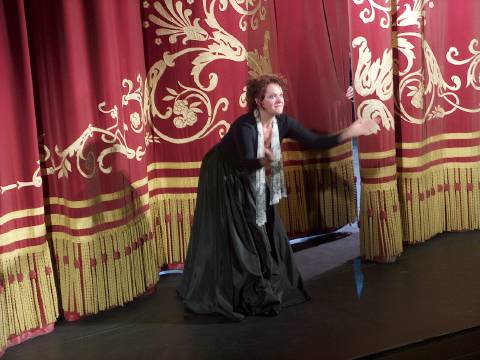|
<< -- 2 -- Tess Crebbin BATON MAGICIAN?

TC: You were only 23 when you made your début at Carnegie Hall, conducting the New York Youth Symphony. Seiji Ozawa was impressed enough to invite you to be a conducting fellow at Tanglewood. Since then, you have gone on to conduct some of the finest orchestras in the world. You have been called a baton-magician and you have the reputation of being able to make any orchestra sound great. How do you do it? Is it the special Bernstein touch? He was once your mentor and you were working as his assistant, so is he to be credited largely with teaching you what you know today?
DS: There were many great conductors I watched and learned from. Solti was also a significant influence and he, for instance, told me that every conductor who is serious about conducting should have an opera house to be attached to. But Bernstein was definitely a major influence.
TC: How did you come to meet him?
DS: As you know, I was one of only four young conductors to be chosen for masterclasses at Tanglewood. He was one of the professors there and he saw me conduct. We worked together, on and off, during the time the course lasted. When it was over, he asked me to become his assistant on his upcoming European tour.
TC: That is a great honour, and at such a young age, but what was it like to work with him. Was it intimidating to be around someone so famous?
DS: Not at all. He had a reputation for being difficult, and I am sure there were some inner demons he was trying to fight and sometimes not quite succeeding. But he was also a very generous person, especially with his time and his knowledge when it came to passing it on to the younger generation. He wanted to help you to be the best you could be and he really took time to do so, not just with me but with many other young conductors he helped along their way as well.
TC: What was the most important thing you learned from him?
DS: I learned a lot just from observing him. He had this very special Bernstein magic that is difficult to put in words. You would have had to be there, observing him closely, to understand what it was all about. It had to do with arching, and how he would approach an arch in a very meticulous manner to make sure you really got the transformation right between phrasings. It all had to flow and come together as one magical whole. But I did not try to copy him, because you should never do this. If you try, you only end up creating a lesser and cheaper version of someone great. Rather, he was adamant about me finding my own style and helping me bring out the best of my individual musicianship. He was the kind of person who would help you, and encourage you, and then came a point where, like a bird, you had to fly on your own.

One of the stars of Stahl's ensemble, the French soprano Nathalie Boissy, shown after a performance of Puccini's 'Trittico' in Munich. Photo © 2006 Philip Crebbin
|
TC: Over the years, what was your relationship with him like?
DS: He was such a busy man, but incredibly thoughtful, and he did make a point of staying in touch. When my son was born in the last year of Lenny's life, for instance, he sent a telegram and we still have that to this day. There is also a very funny story about my oldest daughter and Lenny. During the recording sessions for West Side Story in New York, in late summer of 1984, my daughter was not yet three years old. When he saw her, he planted one of his famous big wet kisses on her forehead. She immediately wiped it on my pants because it was so slobbery. To amuse her, he feigned this unbelievable pain, like he had just been hurt to the bone, and let out a long dramatic ahhh sound. It sent the little girl giggling with delight.
Continue >>
Copyright © 29 March 2006
Tess Crebbin, Germany

|

